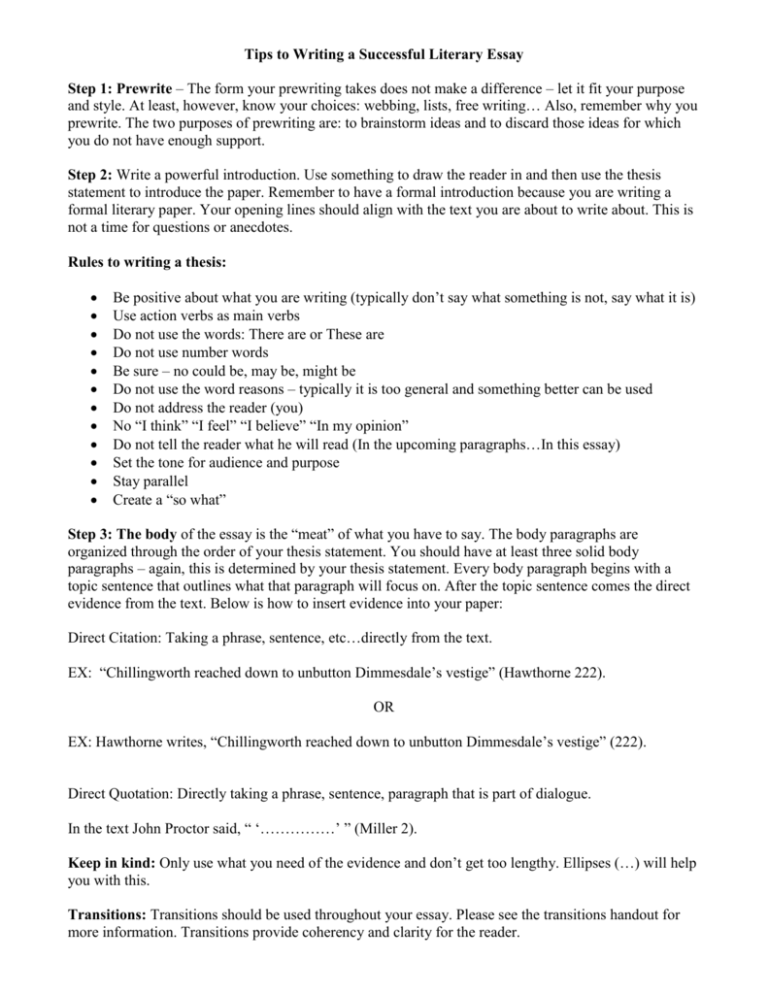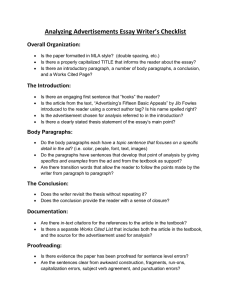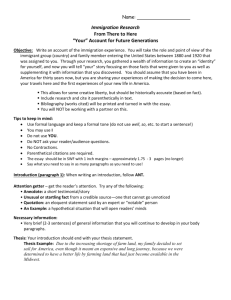Tips to Writing a Successful Literary Essay
advertisement

Tips to Writing a Successful Literary Essay Step 1: Prewrite – The form your prewriting takes does not make a difference – let it fit your purpose and style. At least, however, know your choices: webbing, lists, free writing… Also, remember why you prewrite. The two purposes of prewriting are: to brainstorm ideas and to discard those ideas for which you do not have enough support. Step 2: Write a powerful introduction. Use something to draw the reader in and then use the thesis statement to introduce the paper. Remember to have a formal introduction because you are writing a formal literary paper. Your opening lines should align with the text you are about to write about. This is not a time for questions or anecdotes. Rules to writing a thesis: Be positive about what you are writing (typically don’t say what something is not, say what it is) Use action verbs as main verbs Do not use the words: There are or These are Do not use number words Be sure – no could be, may be, might be Do not use the word reasons – typically it is too general and something better can be used Do not address the reader (you) No “I think” “I feel” “I believe” “In my opinion” Do not tell the reader what he will read (In the upcoming paragraphs…In this essay) Set the tone for audience and purpose Stay parallel Create a “so what” Step 3: The body of the essay is the “meat” of what you have to say. The body paragraphs are organized through the order of your thesis statement. You should have at least three solid body paragraphs – again, this is determined by your thesis statement. Every body paragraph begins with a topic sentence that outlines what that paragraph will focus on. After the topic sentence comes the direct evidence from the text. Below is how to insert evidence into your paper: Direct Citation: Taking a phrase, sentence, etc…directly from the text. EX: “Chillingworth reached down to unbutton Dimmesdale’s vestige” (Hawthorne 222). OR EX: Hawthorne writes, “Chillingworth reached down to unbutton Dimmesdale’s vestige” (222). Direct Quotation: Directly taking a phrase, sentence, paragraph that is part of dialogue. In the text John Proctor said, “ ‘……………’ ” (Miller 2). Keep in kind: Only use what you need of the evidence and don’t get too lengthy. Ellipses (…) will help you with this. Transitions: Transitions should be used throughout your essay. Please see the transitions handout for more information. Transitions provide coherency and clarity for the reader. Body paragraphs each end with a concluding statement that ties the paragraph back to the original “so what” of the thesis statement. Step 4: Write a conclusion to the essay. The conclusion should do more than summarize. The conclusion should write a brief summary of the main points, but should mostly focus on the “so what” of the paper. “So what are you actually trying to prove?” In the sophomore year it is: “So what are you trying to prove about American Society?” The conclusion is the last impression you give the grader, therefore, it should be well written and not rushed through. Step 5: Proofread and Edit the Paper Rules: No first person Do not talk to the reader Use formal language – no slang, euphemisms, clichés Use literary terms (the boy in the story vs the male character in the novel or the end of the novel vs the resolution of the novel) No intensifiers Stay in literary present! Introduce the author and title in the first paragraph, then just use the author’s last name Titles of novels are underlined or italicized; titles of poems or short stories are in quotation marks Do not use contractions Follow usage rules (their, there, they’re) Use active voice Try to avoid using the word “there” Try to avoid using the word “that” Times New Roman 12 point font Double Spaced Always type a heading on the paper aligned to the left of the paper Name Teacher’s Name Class (due) Date: 25 June 1977 Include a works cited Book: Silverstein, Shel. The Giving Tree. New York: Harper Collins, 1986.











